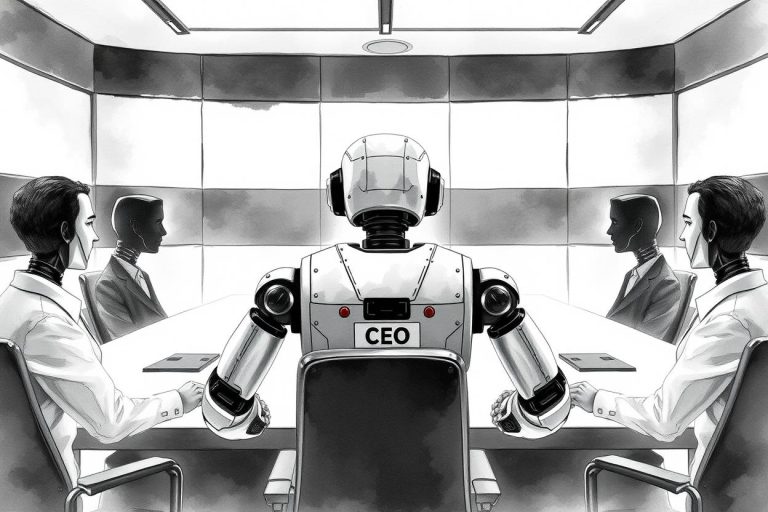AI Role in Post-pandemic Business Recovery

The pandemic has forever altered the way we perceive and conduct business. As we navigate the murky waters of recovery, a beacon of hope emerges: the pivotal AI Role in the current economy.
Artificial intelligence, often regarded as a mere technological advancement, has showcased its potential as a game-changer for businesses grappling with the challenges of the post-pandemic era. This article dives deep into the transformative impact of AI, from reshaping labor markets to paving the way for a more resilient and equitable future.
The Immediate Impact of the Pandemic on Labor Markets
The pandemic brought about an unexpected and profound disruption in labor markets worldwide in 2020. Millions faced unemployment, and businesses shuttered their doors, some temporarily and others for good. The most significant repercussion was the revelation of the importance of the physical dimension of work. Jobs requiring high physical proximity, like front-line healthcare roles and in-person customer service, were heavily impacted. As businesses began adapting:
- Remote Work Emergence: Companies that could transitioned to remote work setups.
- E-commerce Boom: Brick-and-mortar stores ventured online, leading to a surge in e-commerce and associated delivery jobs.
Shifts in Work Trends
The pandemic not only affected the ‘now’ but also instigated long-lasting shifts in work trends. Remote work, initially a temporary fix, has now become a more permanent feature for many companies1. Virtual meetings, once a rarity, became the norm, and online activities, from shopping to entertainment, experienced a boost.
- Remote Work’s Staying Power: Post-pandemic, 20-25% of the workforce in advanced economies could continue working remotely, changing the traditional office model1.
- E-commerce’s Continued Growth: The convenience of online shopping, combined with initial safety concerns, has led to sustained growth in e-commerce, with ripple effects on logistics, warehousing, and transportation jobs1.
The Acceleration in the Adoption of Automation and AI in Business
The pandemic catalyzed the integration of automation and AI across sectors. Especially in high physical proximity sectors, businesses saw AI as a tool to maintain operations while ensuring safety1.
- Business Investment in AI: Contrary to cost-cutting trends during economic downturns, businesses have been bullish about increasing their AI investments1.
- Real-World AI Implementations: From chatbots handling customer inquiries to AI-driven analytics predicting market trends, companies found tangible benefits in AI adoption.
Changing Landscape of Occupations

The job market is undergoing a transformation. While some roles might see a decline, especially those associated with high physical proximity, others are on the rise1. The digital transformation brought about by the pandemic has shifted the focus towards:
- Tech-driven Roles: As businesses shift online, roles centered around digital tools, data analytics, and online marketing see a surge.
- Decrease in Traditional Office Jobs: With automation and AI integration, traditional office roles, especially repetitive tasks, might see a decline.
Strategies for Workforce Transition and AI Role in HR
Companies play a crucial role in navigating the workforce through these transitions1. From retraining initiatives to adopting skill-based hiring practices, businesses can pave the way for smoother transitions. On the other end, policymakers can enhance digital infrastructure and foster environments conducive to skill and knowledge enhancement1.
Reader Tip: If you’re considering AI integration, start small. Pilot AI tools in specific departments and measure the outcomes. This approach reduces risk and provides tangible metrics for broader adoption.
The Digital Renaissance in Post-Pandemic Business Strategy:
As businesses endeavor to redefine their strategies post-pandemic, the spotlight is on data analytics and AI/ML tools. These sophisticated tools have evolved from being mere experimental ventures to becoming the backbone of business operations, especially during challenging times. Companies that were far along in their digital transformation journey were better poised to adapt, showcasing the indispensable nature of advanced intelligent tools in today’s business landscape1.
Harnessing AI for Precise Decision-Making
The pandemic revealed the glaring inefficiencies of legacy systems in our fast-paced, data-driven world. Progressive businesses are realizing the power of AI not just for predictive analytics but for holistic decision-making. By integrating AI-powered Integrated Business Planning, companies can harness real-time data from across their operations, resulting in streamlined processes, enhanced forecasting models, and a significant competitive edge2.
Embracing the Future of Business Software with Artificial Intelligence
Drawing inspiration from tech giants like Amazon and Netflix, the modern business world is swiftly recognizing the need to harness and analyze vast amounts of data efficiently. This transition is not just about keeping up with the times but about envisioning a future where decision-making is swift, accurate, and backed by data-driven insights. AI, with its predictive capabilities, offers an opportunity for businesses to proactively address challenges, innovate, and set the benchmark for excellence in their respective domains2.
The Silver Lining: Potential Benefits of These Transitions

Every challenge presents an opportunity. The workforce transitions, while initially daunting, hold the potential for numerous benefits1. Retraining and reskilling initiatives can lead to a more resilient, talented, and well-paid workforce, contributing to a stronger society.
Addressing Common Concerns About AI in Business Integration
Adopting new technology, especially something as transformative as AI, comes with its set of concerns. Businesses often grapple with questions about the feasibility, costs, and tangible benefits of AI integration.
- Skill Requirements: The perception exists that AI demands highly specialized skills. While specific applications might require expertise, many modern AI tools are designed for non-experts, ensuring broader adoption1.
- Infrastructure Investments: Deploying AI doesn’t always necessitate massive infrastructure overhaul. Many businesses are leveraging third-party infrastructure, benefiting from AI without hefty upfront costs1.
- Real-Time Computations: The need for real-time data processing can be daunting. However, modern AI solutions prioritize efficient real-time operations, ensuring businesses stay agile and responsive.
Embedded AI: The Future of Business Software
The concept of ’embedded AI’ is revolutionizing business software. By integrating AI capabilities directly into standard software tools, businesses can reap AI benefits without additional investments1.
- Predictive Data Entry in Finance: Financial tools can predict entries based on historical data, reducing errors and saving time.
- Automated Resume Screening in HR: Recruitment becomes efficient as AI screens resumes, matching job requirements with applicant skills.
- AI-Powered Scoring Models in Sales and Marketing: Sales teams can prioritize leads based on AI-driven scoring, ensuring better conversion rates.
Looking Ahead: AI’s Promising Roadmap
The post-pandemic business landscape, while fraught with challenges, is also ripe with opportunities. AI stands at the forefront of these opportunities, offering tools and insights to navigate this new normal. As businesses, policymakers, and the workforce come together, the future, powered by AI, looks promising.
As we move forward, the integration of AI in businesses is expected to grow exponentially. The post-pandemic world has underscored the importance of agility, efficiency, and innovation – all hallmarks of AI-driven operations.
Reader Tip: Collaborate and learn. Join AI forums, attend webinars, and partner with AI-focused firms. Building a network can offer insights, best practices, and even collaboration opportunities.
Final Thoughts on AI Business recovery
The post-pandemic era is one of rebirth and reinvention. Businesses are not just bouncing back; they’re evolving, with AI playing a pivotal role in this transformation. As AI tools become more accessible and integrated, the businesses that leverage them will be the ones setting the pace, innovating, and thriving in the new normal.




